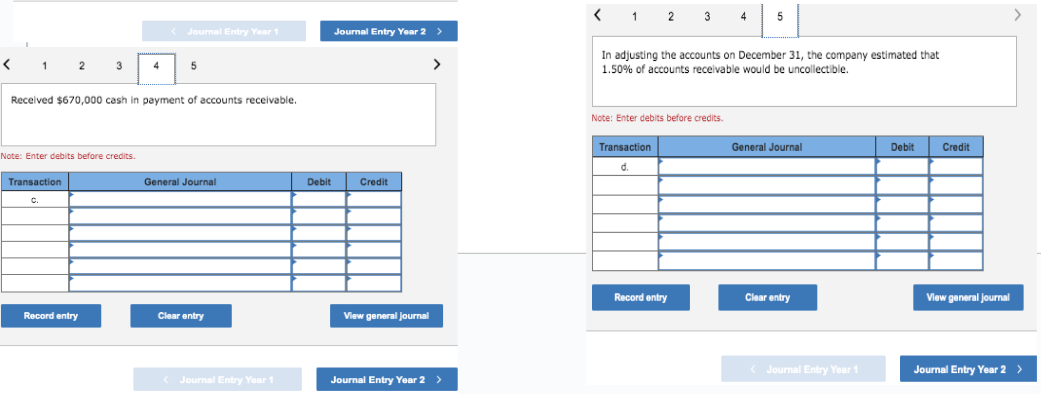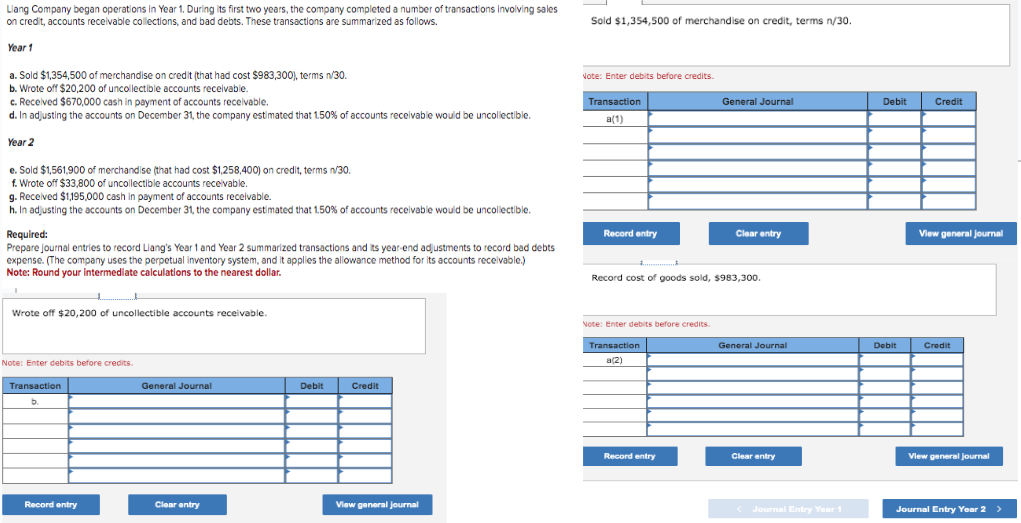Liang Company began operations in Year 1. During its first two years, the company completed a number of transactions involving sales on credit, accounts receivable collections, and bad debts. These transactions are summarized as follows. Year 1 a. Sold $1,354,500 of merchandise on credit (that had cost $983,300), terms n/30. b. Wrote off $20,200 of uncollectible accounts receivable. c. Received $670,000 cash in payment of accounts receivable. d. In adjusting the accounts on December 31, the company estimated that 1.50% of accounts receivable would be uncollectible. Year 2 e. Sold $1,561,900 of merchandise (that had cost $1,258,400) on credit, terms n/30. f. Wrote off $33,800 of uncollectible accounts receivable. g. Received $1,195,000 cash in payment of accounts receivable. h. In adjusting the accounts on December 31, the company estimated that 1.50 % of accounts receivable would be uncollectible. Required: Prepare journal entries to record Liang's Year 1 and Year 2 summarized transactions and its year-end adjustments to record bad debts expense. (The company uses the perpetual inventory system, and it applies the allowance method for its accounts receivable.) Note: Round your intermediate calculations to the nearest dollar. Wrote off $20,200 of uncollectible accounts receivable.
Bad Debts
At the end of the accounting period, a financial statement is prepared by every company, then at that time while preparing the financial statement, the company determines among its total receivable amount how much portion of receivables is collected by the company during that accounting period.
Accounts Receivable
The word “account receivable” means the payment is yet to be made for the work that is already done. Generally, each and every business sells its goods and services either in cash or in credit. So, when the goods are sold on credit account receivable arise which means the company is going to get the payment from its customer to whom the goods are sold on credit. Usually, the credit period may be for a very short period of time and in some rare cases it takes a year.


Trending now
This is a popular solution!
Step by step
Solved in 3 steps









